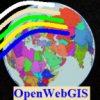Search the Community
Showing results for tags 'programming'.
-
When you create your maps with the help of online services, sometimes you surely want not only to see your data on the map, but also to make at least some mathematical analysis. For example, to create a chart reflecting the change in the data and to estimate how much your data is correlated in some attributes and to construct a linear regression equation. Not every online service for maps creation provides such an opportunity. In OpenWebGIS you can do it. In this article, we'll start talking about how you can do it yourself in your service using JavaScript language.Please read more about it: http://openwebgisystem.blogspot.ru/2015/08/maps-hurricanes-and-linear-regression.html
-
- 2
-

-
- OpenWebGIS
- JavaScript
-
(and 1 more)
Tagged with:
-
Hello, I am working on a project that requires that I automatically generate polygons to approximate the boundaries of some districts because our country does not have these informartions. The idea I had was to generate these boundaries from the distances of the point groups belonging to each polygon. I attach the diagram below in order to illustrate my ask. I only have the coordinates of the points Ai to Gi. All Ai points belong to the polygon A, all points Bi to the polygon B, etc. I do not have any data space allowing me to create polygons A to B. I can be content with a realistic approximation, however. The idea then is to get the boundaries between these polygons, knowing only the coordinates of the points Ai - Gi and knowing that each point Ai belongs to the set A, and so on. I have no idea how to proceed. Maybe this has already been processed. Would it be possible, please, to give me guidance on how or where to find a similar job if he had be done. Thanking you a lot in advance. Best regards
- 4 replies
-
- gis
- programming
-
(and 1 more)
Tagged with:
-
As the topic title implies, does anyone here have any experience with programming in Delphi & specifically with using ArcObjects? I have built a customised ArcReader application that I am now wanting to extend the functionality of and have installed & licensed ArcGIS Engine 10.2 and also installed the ArcObjects .NET SDK. I have followed the instructions published by Roger Dunn for component registration under Delphi but I'm not sure all of the components are available, specifically one called "ReaderControl" as opposed to the one I was using before called "ArcReaderControl". Any assistance would be appreciated.
-
- 1
-

-
- delphi
- ArcObjects
-
(and 1 more)
Tagged with:
-
Hello There! Would like to share this link for those interested to code in python and make maps =) http://sensitivecities.com/so-youd-like-to-make-a-map-using-python-EN.html I was able to create 300 of these maps in 2 hours after reading this. =) Also done this to visualize the extent of damage due to storm surges brought about byTyphoon Haiyan (Yolanda in our country name) in Tacloban City, Eastern Samar.
-
Hello, My background is in Simulation programming, and after a while in this industry I want to change. I have done a bit of GIS programming in my work, as visualisation is important in simulation I've written DEM importers and 3D visualisers, etc. I have even used ESRI ArcMap a few times many years ago but nothing recently. I've mainly used C# and C++, but have done not much web based. I have always enjoyed the geographic elements of programming which is why I want to get more into "GIS". I would like to also do field work. I resent being behind a computer so much and want to be outdoors more. A 50/50 split I think would be ideal. Over here in the UK I check out the jobsites but there is not too much GIS work about, especially not in my domain. I'm not sure where I would fit in but I expect I will have to move to another country. Given these desires (field work, GIS) what role might I fit into, how could I progress towards obtaining this role?
- 2 replies
-
- 4
-

-
- c#
- programming
-
(and 1 more)
Tagged with:
-
http://courses.ncsu.edu/nr595d/common/index.html Boooom.
- 3 replies
-
- 4
-

-
- python
- programming
-
(and 1 more)
Tagged with:
-
It's been a long time since Guido van Rossum, a Dutch programmer, invented the high-level object-oriented programming language called Python. No sooner the language hit the community, it spread like fire. The true power of python is that it's free, fully open-source, easy to learn and understandable, well documented high-level programming environment. Like any other community, GIS also thrived with it. From OSGeo to the mighty ESRI, everyone is somewhat using Python in their projects. New tools, apps and websites are making way. Developers are building new frameworks and modules for it. In this topic we will look at few of the most prominent ones. GDAL It will come a time in every GIS Professional’s career when they will need to quickly access information from a random shapefile they have, but do not have access to any GIS software or geoprocessing functionality (think of a laptop on the road, a remote machine not running Windows, etc). GDAL comes to the rescue, providing us such functionalities. GDAL is a translator library with Python bindings that allows access to raster data using a unified abstract layer. Bundled with it is OGR, which provides similar functionality for vector data. ArcPy ArcPy (not truly a module,predecessor is arcgisscripting) is a site package that builds on (and is a successor to) the successful arcgisscripting module. Its goal is to create the cornerstone for a useful and productive way to perform geographic data analysis, data conversion, data management, and map automation with Python. ArcPy provides access to geoprocessing tools as well as additional functions, classes, and modules that allow you to create simple or complex workflows quickly and easily. ArcPy provides access to geoprocessing tools as well as additional functions, classes, and modules that allow you to create simple or complex workflows. Broadly speaking, ArcPy is organized in tools, functions, classes, and modules. Numpy I cannot think of any GIS practitioner that did not have to manipulate raster data in a peculiar way, only finding that the software at hand doesn’t allow you to perform many customized functions. If one can interpret raster data (which GDAL above helps us with), then one can use them in Python as a matrix (algebraic matrix). numpy is the best Python package out there for this sort of situation. numpy is a package that enables n-dimensional array manipulation in Python, as essential part of any scientific endeavor. It also provides linear algebra functionalities, Fourier transforms and random number generators. SciPy SciPy (pronounced "Sigh Pie") is open-source software for mathematics, science, and engineering. It is also the name of a very popular conference on scientific programming with Python. The SciPy library depends on NumPy, which provides convenient and fast N-dimensional array manipulation. The SciPy library is built to work with NumPy arrays, and provides many user-friendly and efficient numerical routines such as routines for numerical integration and optimization. Together, they run on all popular operating systems, are quick to install, and are free of charge. NumPy and SciPy are easy to use, but powerful enough to be depended upon by some of the world's leading scientists and engineers. If you need to manipulate numbers on a computer and display or publish the results, give SciPy a try! PySAL PySAL is an open source cross-platform library of spatial analysis functions written in Python. It is intended to support the development of high level applications for spatial analysis. It is important to underscore what PySAL is, and is not, designed to do. First and foremost, PySAL is a library in the fullest sense of the word. Developers looking for a suite of spatial analytical methods that they can incorporate into application development should feel at home using PySAL. Spatial analysts who may be carrying out research projects requiring customized scripting, extensive simulation analysis, or those seeking to advance the state of the art in spatial analysis should also find PySAL to be a useful foundation for their work. GeoDjango GeoDjango is a free and open source web application framework, written in Python, which follows the model–view–controller architectural pattern. It is maintained by the Django Software Foundation (DSF), an independent organization established as a non-profit. Some well known sites that use Django include Pinterest, Instagram, Mozilla, The Washington Times, and the Public Broadcasting Service. NetworkX – Complex Networks Analysis While most GIS software out there provides the ability to build networks, sometimes it is easier to build networks quickly and dirty, without having to involve complex GIS software. An analysis of participation by space in an experiment can easily be achieved using the simple, yet powerful NetworkX module. NetworkX is a Python package for the creation, manipulation, and study of the structure, dynamics, and functions of complex networks. It is hosted by the Los Alamos National Laboratory, and sees active development (presumably sponsored somehow by Los Alamos). PyProj Performs cartographic transformations and geodetic computations. The Proj class can convert from geographic (longitude,latitude) to native map projection (x,y) coordinates and vice versa, or from one map projection coordinate system directly to another. GeoJSON GeoJSON is a format for encoding a variety of geographic data structures. A GeoJSON object may represent a geometry, a feature, or a collection of features. GeoJSON supports the following geometry types: Point, LineString, Polygon, MultiPoint, MultiLineString, MultiPolygon, and GeometryCollection. Features in GeoJSON contain a geometry object and additional properties, and a feature collection represents a list of features. Shapely Shapely is a BSD-licensed Python package for manipulation and analysis of planar geometric objects. It is based on the widely deployed GEOS (the engine of PostGIS) and JTS (from which GEOS is ported) libraries. This C dependency is traded for the ability to execute with blazing speed. Shapely is not concerned with data formats or coordinate systems, but can be readily integrated with packages that are. ----------------------------------------------------------------------------------------------------------------------------------------- Let me hear about modules I missed here. Original articles, http://michalisavraam.org/2010/04/the-essential-python-modules-for-gis/ http://gis.stackexchange.com/questions/23575/what-are-the-python-tools-modules-add-ins-crucial-in-gis
- 3 replies
-
- 3
-

-
- python
- geoprocessing
-
(and 1 more)
Tagged with:





